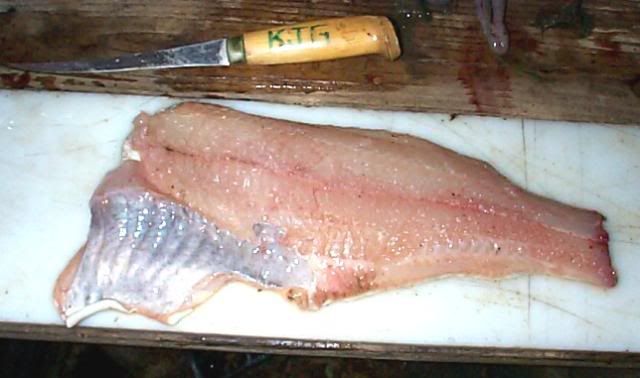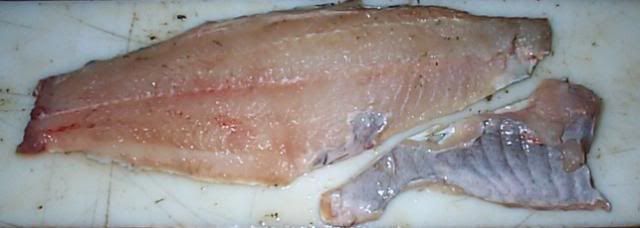I've been filleting fish for nearly 50 years. Except for some really big fish, like big walleye or Lake Superior Lake Trout, or maybe some certain saltwater fish, everything at our house gets filleted. Most get skinned. My Finnish relatives and ancestors have been doing it this way for generations -- thus the now-famous Rapala fillet knife introduced in the early 1960s by Lauri Rapala of Finnland.
Most fish have similar bone structures. These include the sunfish family (bass, bluegill, crappie, etc.), the perch family (yellow perch, walleye, sauger, etc.), the salmon family (trout, salmon, etc.), and many others. Some exceptions are pike and carp, which require a slightly different fillet technique.
I've used this same basic technique on fish from about 4-5 inches to over 40 inches. I've used whatever knife was at hand, but an extremely sharp and thin blade sure makes it easier. To show off as a teenager, I even used a sharpened double-bit axe to fillet a big walleye -- not recommended. I've never used an electric knife to clean fish, but I've been with professional guides who've massacred my prize fish when they tried to help clean them by filleting them incorrectly with electric knives.
By the way, depending on how and where you are using the word, this technique and piece of meat can be correctly spelled "filet" or "fillet." There are many theories of where the word originated, and how it was originally spelled. That is a whole 'nother story.
Here are a few photos to get you started filleting bluegill, bass or catfish:
Start with a cut from the tail that skims the backbone.
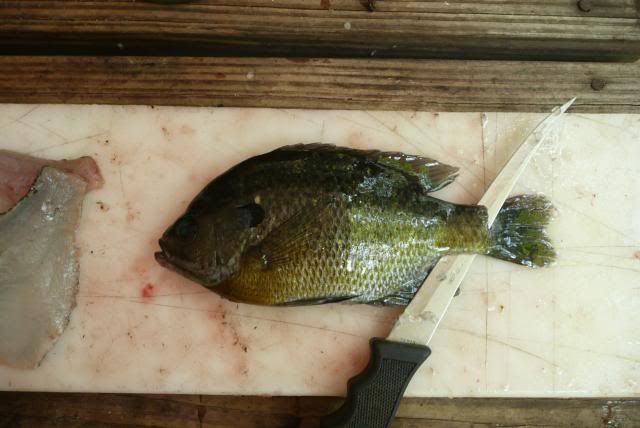
Slice all along the top of the backbone, to just behind the head.
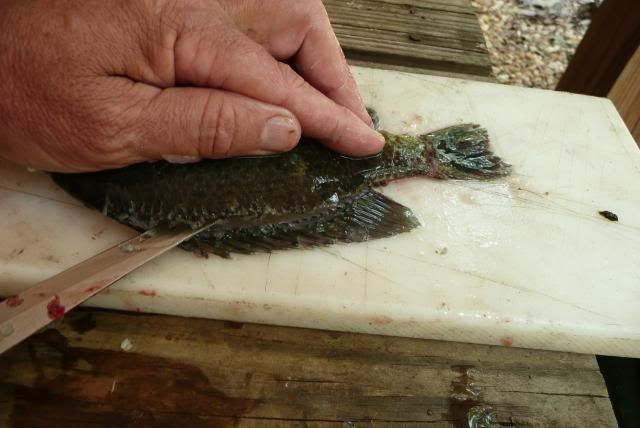
Slice just behind the head and gill cover, down to the belly.

Slide down the backbone and ribs, cutting through the "wire bones" or lateral bones that are at the top of the ribs, extending out to the skin. We'll remove the lateral bones later.
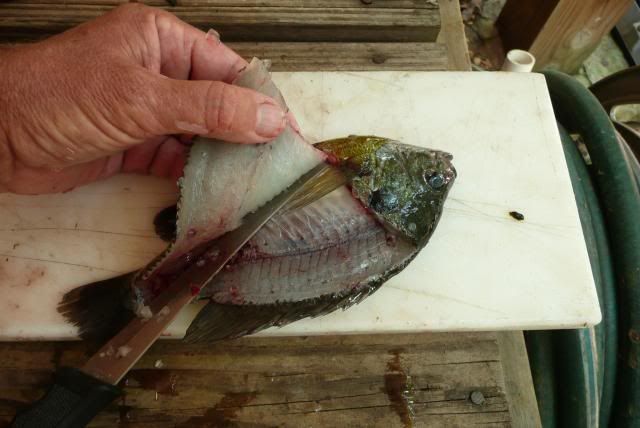
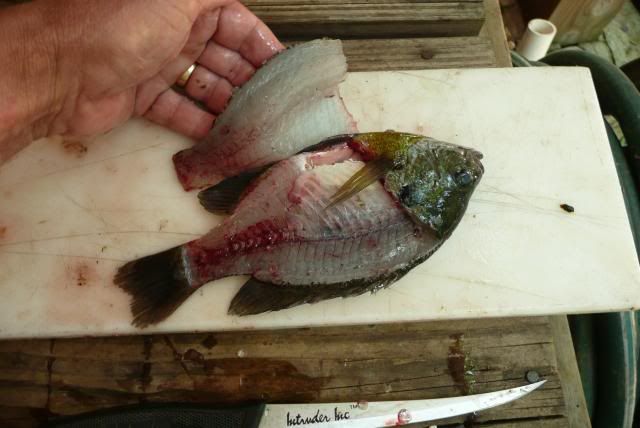
Flip the fish to its other side, and repeat.
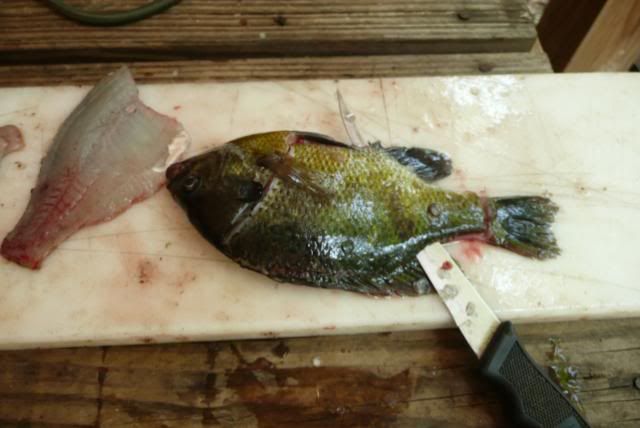
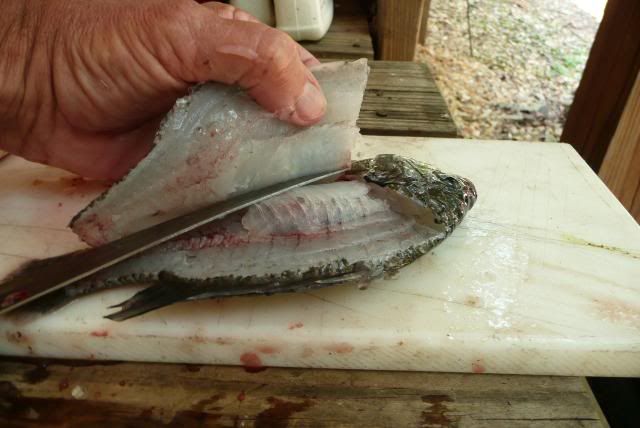
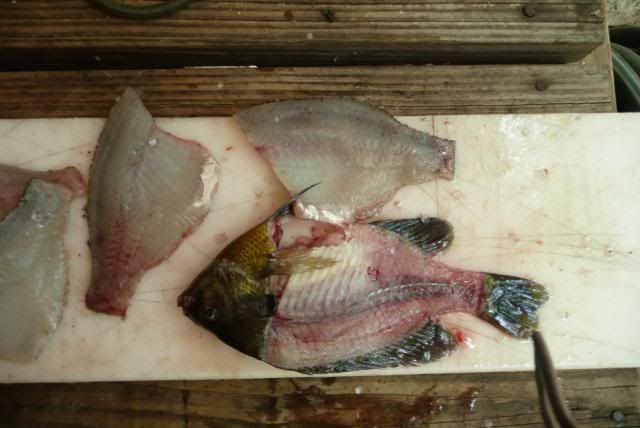
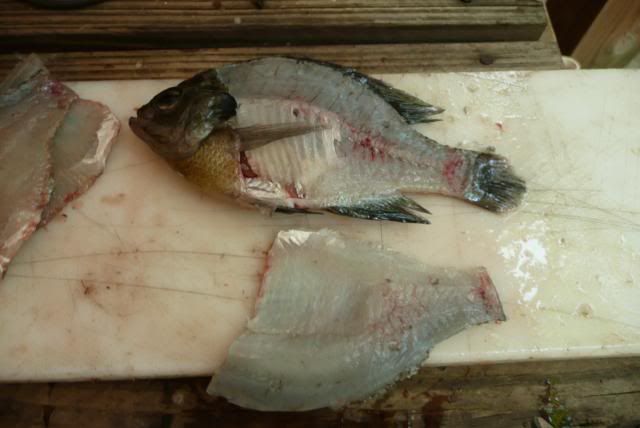
Remove the skin. Using either the fingernail on your index finger, or a kitchen fork, securely hold the skin against a flat surface. Just ahead of your fingernail or fork, cut through the flesh to the skin. Put pressure against the cutting board with the broad side of the knife. The knife will easily separate the skin from the meat.

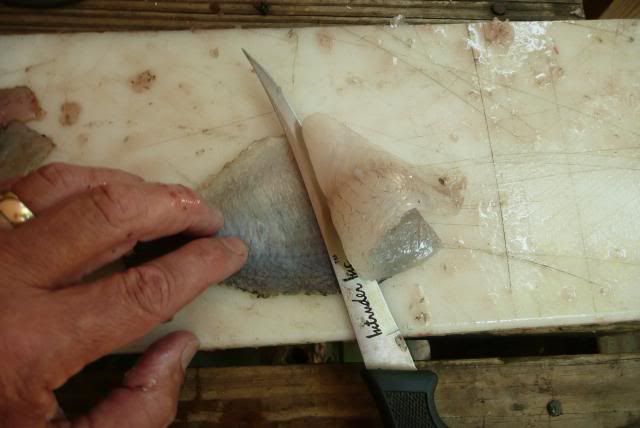
Use your fingertips to feel for the lateral bones.
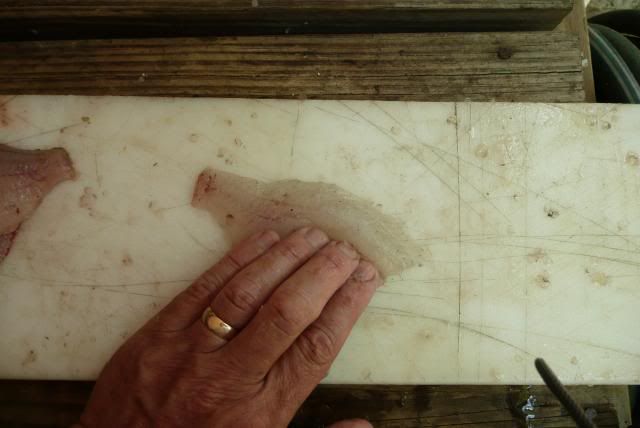
Cut out the lateral bones.
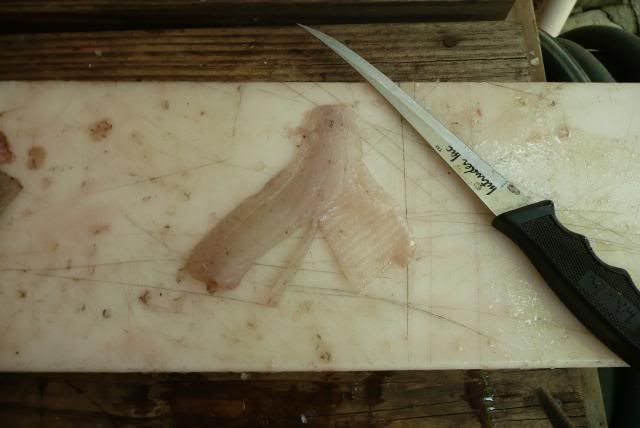
Separate the "shoulder" from the "belly."

Bread or batter the pieces. We find that three 9-10 inch bluegill are plenty for my wife and me. When we have company, we figure on 1.5 bluegill per guest.
Enjoy.
Ken G.
P.S. Catfish fillet photos

